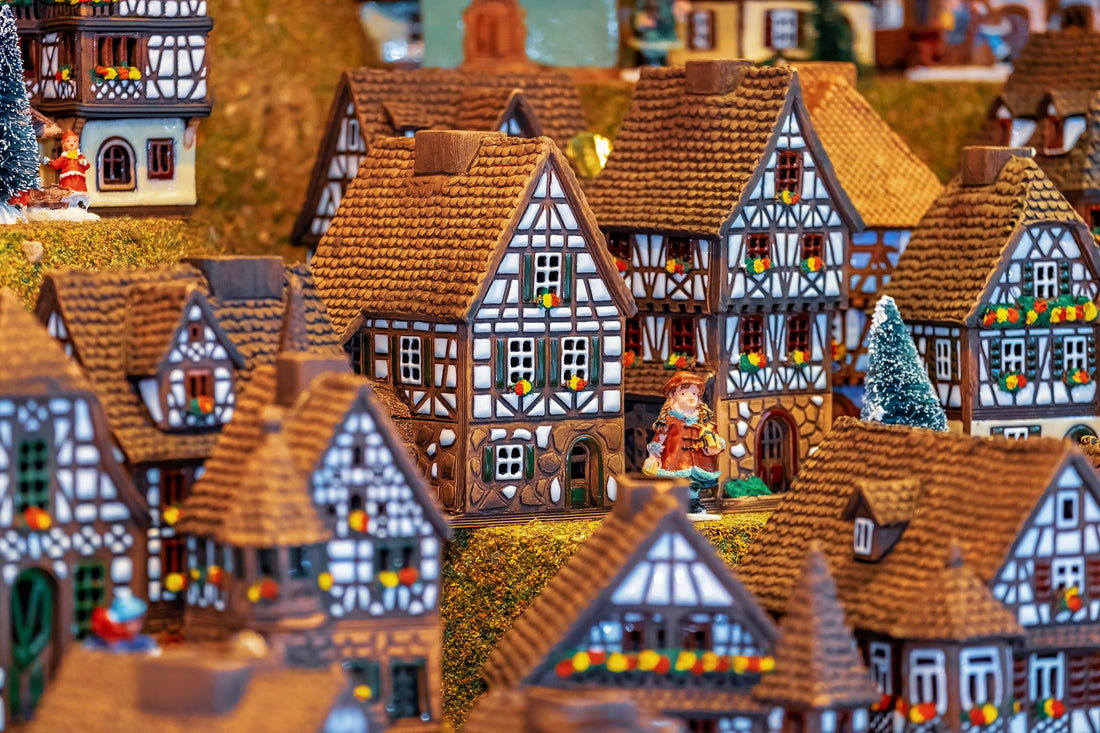
Christmas Celebration Around The World
Share
Surprise! We actually have a Part 2 to our blog posted Monday. If you haven't read it yet, you can check it out here. Make sure you read that to fully understand this blog and stay in the loop. Anyways here we go!
Contemporary Customs In The World

It's no stranger that the west has been responsible for the plethora of customs, trends, and lifestyles of the current world as we know it. Even Christmas, a religious celebration has been twisted and redefined in the west to what we all are familiar with today.
The Renaissance humanist Sebastian Brant recorded, in Das Narrenschiff (1494; The Ship of Fools), the custom of placing branches of fir trees in houses. Even though there is some uncertainty about the precise date and origin of the tradition of the Christmas tree, it appears that fir trees decorated with apples were first known in Strasbourg in 1605. The first use of candles on such trees is recorded by a Silesian duchess in 1611.
The tradition of celebrating Christmas as a secular family holiday is splendidly illustrated by a number of English “Christmas” carols such as “Here We Come A-Wassailing” or “Deck the Halls.” It can also be seen in the practice of sending Christmas cards, which began in England in the 19th century. Moreover, in countries such as Austria and Germany, the connection between the Christian festival and the family holiday is made by identifying the Christ Child as the giver of gifts to the family.
In some European countries, St. Nicholas appears on his feast day (December 6) bringing modest gifts of candy and other gifts to children. In North America, the pre-Christmas role of the Christian saint Nicholas was transformed, under the influence of the poem “A Visit from St. Nicholas” (or “Twas the Night Before Christmas”), into the increasingly central role of Santa Claus as the source of Christmas gifts for the family. While both name and attire—a version of the traditional dress of bishop—of Santa Claus reveal his Christian roots, and his role of querying children about their past behaviour replicates that of St. Nicholas, he is seen as a secular figure.
In Australia, where people attend open-air concerts of Christmas carols and have their Christmas dinner on the beach, Santa Claus wears red swimming trunks as well as a white beard.
Contemporary Customs In Other Areas
1. Hanukkah

The Jewish festival of Lights, Hanukkah starts on the eve of the 25th of Kislev (the month in the Jewish calendar that occurs at about the same time as December). Hanukkah celebrates when the Jewish people were able to re-dedicate and worship in their Temple, in Jerusalem, again following many years of not being allowed to practice their religion.
2. Kwanzaa

Kwanzaa is a seven-day festival that celebrates African and African American culture and history. Kwanzaa takes place from 26th December to 1st January. The name Kwanzaa comes from the phrase 'matunda ya kwanza' which means 'first fruits' in the Swahili language (an Eastern African language spoken in countries including Kenya, Uganda, Tanzania, Mozambique and Zimbabwe). Kwanzaa is mostly celebrated in the USA.
3. Christmas in Japan
In Japan, the major religions followed are Buddhism and Shinto, so Christmas is more of a commercial event that Japanese people celebrate for fun. It is common for Japanese parents to give Christmas presents to their children and this exchange happens on Christmas Eve, not Christmas day. However, adults don't usually give gifts to each other as they keep to the notion that only Santa brings presents.
4. Christmas among Chinese and Vietnamese
Chinese New Year is the Chinese version of Christmas and the biggest holiday, but many Chinese people still get in the holiday spirit around the 25th December just for fun. Christmas is not an official holiday in China, so most offices, schools, and shops remain open. The western style of Christmas as we know it is more prominent in Hong Kong, Macau, and Taiwan. Chinese children don't normally leave out cookies and milk for Santa, grass for the reindeer or write a letter detailing their heartfelt wishes, but they can get their photo with the friendly white-bearded father at some department stores. Colourful, cellophane-wrapped 'Christmas apples' are a popular gift. The word "apple" apparently sounds like "Christmas eve" in Mandarin. In China and Taiwan, Santa is called shèng dàn lǎo rén and he is often accompanied in Taiwan with his sisters: young women dressed in elf costumes or red and white. In Hong Kong, Santa is called Lan Khoong or Dun Che Lao Ren which translates to “Christmas Old Man”. Cute isn't it?
Only a small amount of the Vietnamese population identifies as Christian, but that doesn't stop the Vietnamese people celebrating the spirit of Christmas, predominantly on Christmas Eve.
In Vietnam's largest city, Ho Chi Minh City people like to go into the city centre on Christmas Eve to enjoy the light shows, eat out, throw confetti, take pictures and enjoy the Christmas decorations. Vietnam was once part of the French Empire and there are still French influences in the Christmas traditions.
5. Christmas in Thailand
Christmas is not widely celebrated in Thailand and the 25th is just a normal working day. Thailand is about 85% Buddhist, 14% Muslim and the remaining 1% accounts for other religions and non-religious citizens. The King's birthday on the 5th of December is the biggest holiday at the end of the year, where celebrations can continue until the end of the month! Christmas decorations can be seen in Bangkok and major tourist hot spots but itís more of a commercial exercise.
So now you have an idea of what Christmas feels like in different countries. They may not have the same background or connotations as Christmas but the principles of joy, love, happiness and togetherness are still enunciated in each and every way celebrated. We hope you have been enlightened by this blog and perhaps you could amalgamate some of these traditions for your next Christmas plans!
